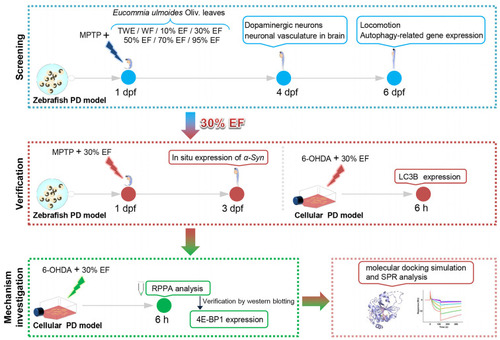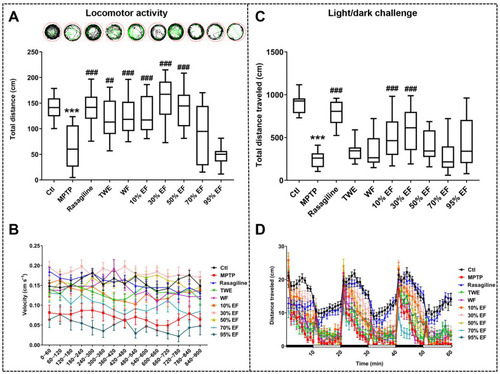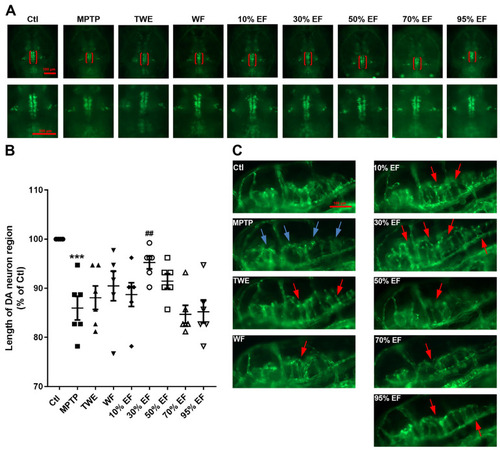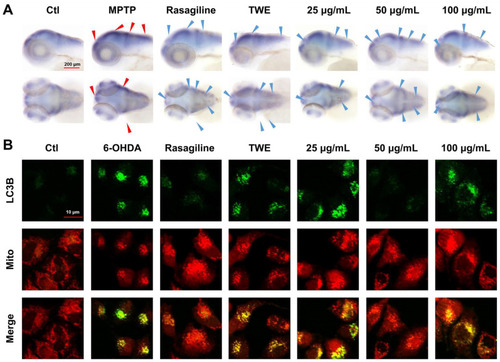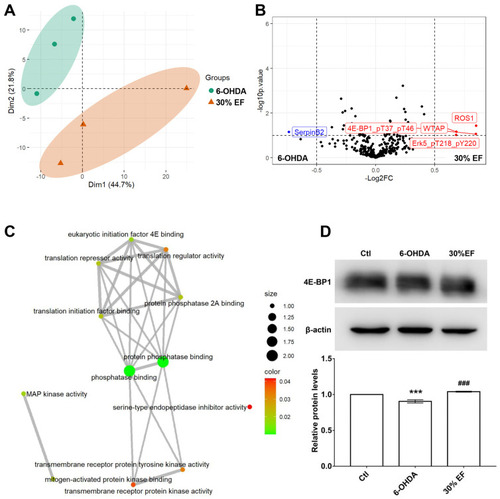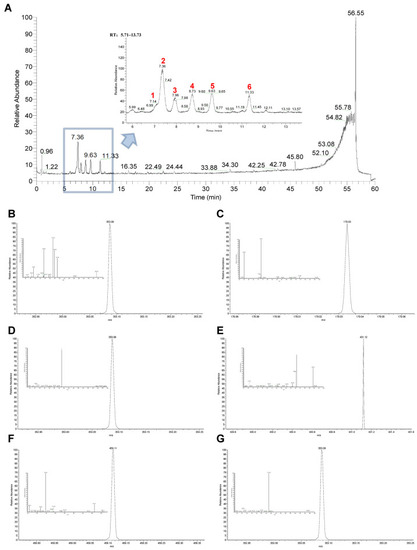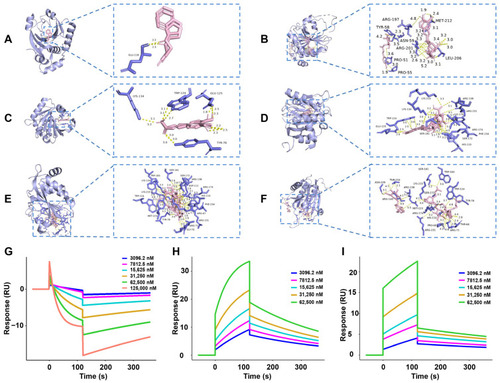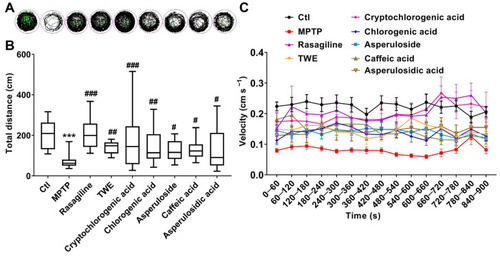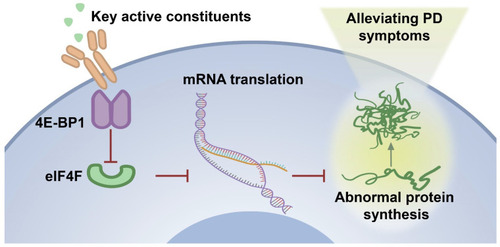- Title
-
Identification of Key Active Constituents in Eucommia ulmoides Oliv. Leaves Against Parkinson's Disease and the Alleviative Effects via 4E-BP1 Up-Regulation
- Authors
- Li, Y., Shi, R., Xia, L., Zhang, X., Zhang, P., Liu, S., Liu, K., Sik, A., Stoika, R., Jin, M.
- Source
- Full text @ Int. J. Mol. Sci.
|
The experimental workflow chart. Zebrafish at 1 day (s) post fertilization (dpf) were exposed to MPTP and different fractions of EUOL extract. The 30% EF was identified to have the best anti-PD activity by evaluating the development of dopaminergic neurons and neuronal vasculature in the brain at 4 dpf. At 6 dpf, we monitored zebrafish behavior and tested the expression of autophagy-related genes. Then, we verified the anti-PD activity of 30% EF using the zebrafish and cellular PD model by detecting the expression of |
|
Effect of different fractions of EUOL extract on zebrafish PD-like behavior. ( |
|
The protective effect of different fractions of EUOL extract on dopaminergic neurons and blood vessels in zebrafish PD model. ( |
|
The expression of key genes involved in PD after the treatment with different fractions of EUOL extract. The amount of gene expression (( |
|
Effect of 30% EF on |
|
Preliminarily unveiling the underlying mechanism of the 30% EF against PD. ( |
|
Total ion chromatograms and mass spectrogram of the main components of 30% EF using UPLC-Q-Exactive Orbitrap/MS. ( |
|
The strong binding ability of the main components in 30% EF with 4E-BP1. ( |
|
Anti-PD action of the main components in the key active constituent 30% EF by analyzing PD-like behavior. ( |
|
The proposed mechanism underlying the effect of 30% EF on activating 4E-BP1 under PD conditions. MPTP-induced intracellular alterations lead to a decrease in 4E-BP1 expression, enhancing eIF4F complex formation and potentially facilitating abnormal protein synthesis. In contrast, the application of 30% EF counteracts these effects by up-regulating 4E-BP1, which restores translational homeostasis and cellular damage, ultimately alleviating Parkinsonian symptoms. |

